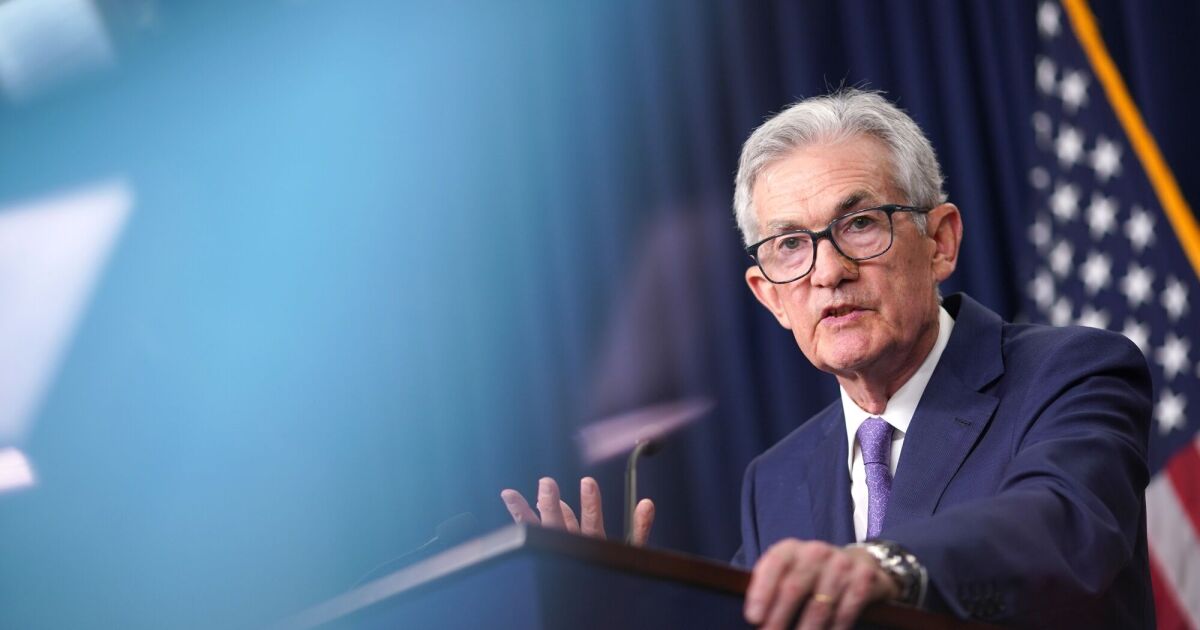
WASHINGTON — Federal Reserve Chair Jerome Powell said it will take more than an interest rate cut to rein in rising housing costs.
During his post Federal Open Market Committee press conference on Wednesday, Powell said the best thing the Fed can do to address rising shelter costs is stay the course on stabilizing prices.
"Ultimately, the best thing we can do for the housing market is to bring inflation down so that we can bring rates down, so that the housing market can continue to normalize," Powell said. "There will still be a national housing shortage, as there was before the pandemic."
Powell
"We understand that if we wait too long, that could come at the cost of economic activity and performance of the expansion. We understand that if we move too quickly, we could end up undoing a lot of the good we've done and have to start over and it could be very disruptive," Powell said. "So, we're extremely aware of both of those risks and are just basically trying to manage them. And what we said is that we don't think it'll be appropriate to begin to loosen policy until we're more confident that inflation is moving down to 2% in a sustainable way."
Powell's comments came after FOMC voted to keep its benchmark interest rate unchanged at between 5.25% and 5.5%, where it has been since last July.
The Fed's decision to hold steady comes as government measures of price growth showed significant signs of slowing. The U.S. Bureau of Labor Statistics's monthly report on the
One outlier in the CPI report was shelter, which ticked up 0.4% last month and is up 5.4% during the past year. The report notes that housing costs were the driving force behind the uptick for all items minus food and energy.
Powell attributed this rise to lagging data about new rental agreements, which are a key component to how shelter prices are calculated.
"Those playing into rollover rents much more slowly for existing tenants than new tenants," he said. "What we've found now is that there is a bulge of high past increases in market rents that has to get worked off, and that may take several years."
Mortgage lenders, affordability advocates and politicians have all grown frustrated with how the Fed's policies have impacted the costs of housing.
"This housing-related inflation is directly driven by high interest rates: Reducing rates will reduce the costs of renting, buying, and building housing, lowering Americans' single highest monthly expense," wrote Sens. Elizabeth Warren, D-Mass., John Hickenlooper, D-Colo., and Jacky Rosen, D-Nev., in a letter to Fed Chair Jerome Powell on Monday. "Lowering interest rates will likely also decrease the cost of auto insurance as well, which has risen due to factors completely unrelated to the cost of lending."
Elsewhere in the world, other major central banks — including the Bank of England and the Bank of Canada — have already started lowering their policy rates in the face of slowing economic activity. Some Democrats in Congress urge the Fed to follow suit.
"The Fed's decision to keep interest rates high continues to widen the rate gap between Europe and the U.S, as the lower interest rates could push the dollar higher, tightening financial conditions," the senators wrote.
Despite these developments, FOMC participants broadly expected the target rate to remain unchanged coming into the meeting based on previous month's inflation readings, continued gains in the labor market and comments from various Fed officials.
Along with the policy statement, the seven members of the Fed Board of Governors as well as the 12 regional reserve bank presidents also shared their current views on various present conditions in their quarterly summary of economic projections. The forecasts, which are compiled independently ahead of the meeting, show a growing skepticism about the prospects for multiple rate cuts this year, something that seemed almost guaranteed coming into 2024.
Four of the 19 participants said they expect interest rates to remain unchanged this year, up from two in the March survey. Meanwhile, seven said they anticipated one cut and eight thought two would be appropriate. Earlier this year, 10 said they expected three or more cuts.
Powell emphasized that the projections simply reflect participant views at a single moment in time and are subject to change as new data comes in. He reiterated that the committee will look to increase rates before seeing signs of economic distress, but said he does not see reason to expect that in the near future.
Specifically, he noted that the banking sector is well positioned to withstand the current elevated interest rate environment.
"The banking system has been solid, strong, well capitalized [and] lending. We've seen good performance from the banks," Powell said. "We had the turmoil early on last year, but you know, banks have been focusing on bringing up their liquidity, the capital and putting risk management plans in place. So, the banking system seems to be in good shape."



